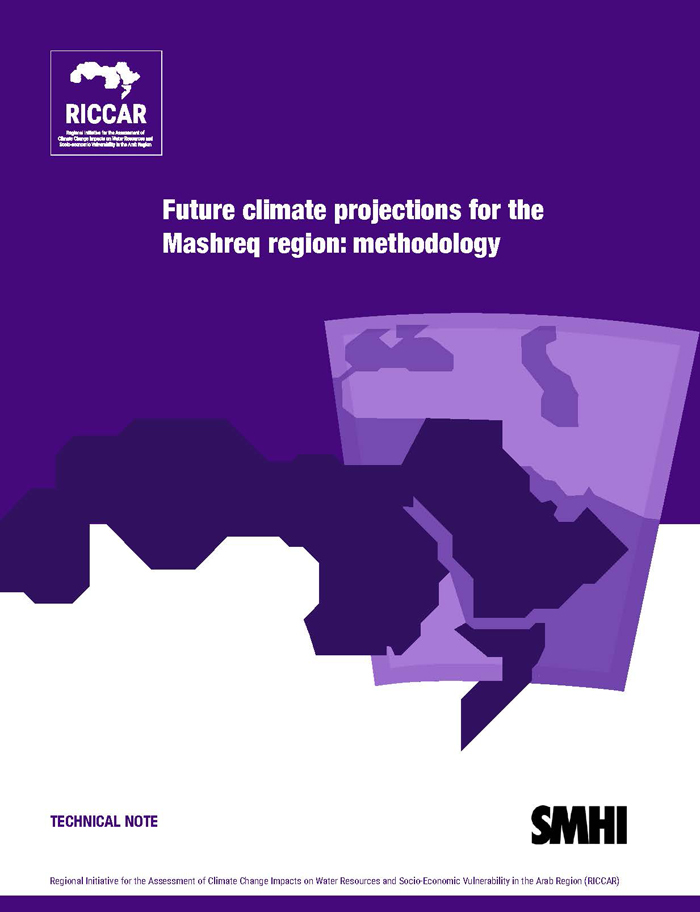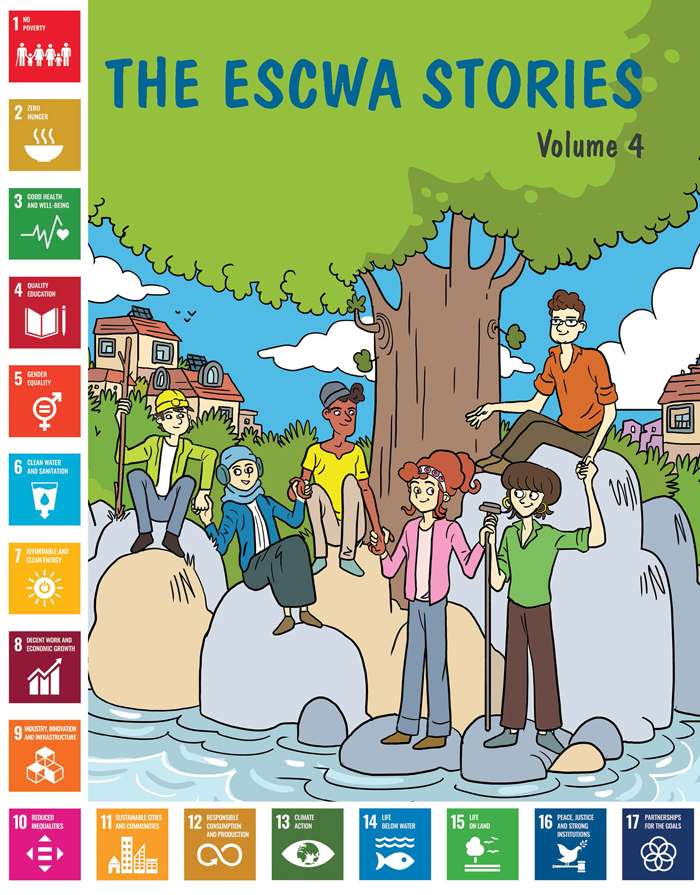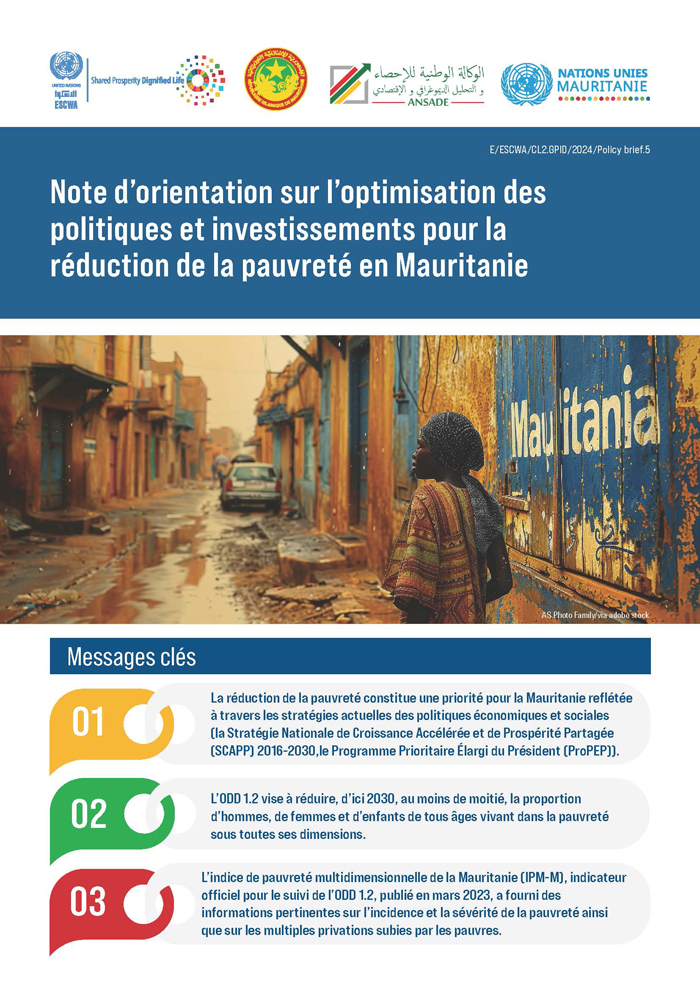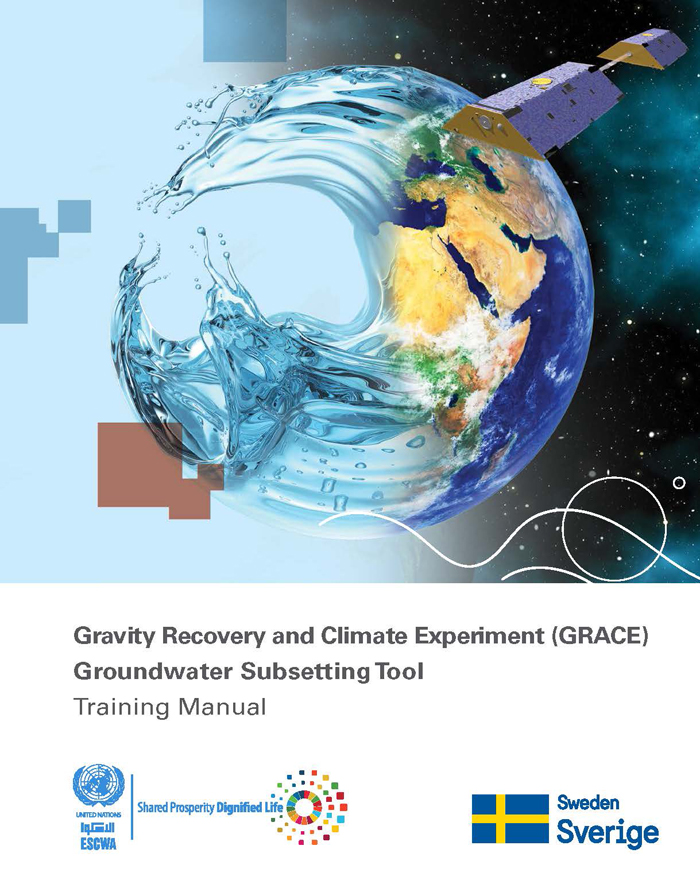
ESCWA Publication: E/ESCWA/CL1.CCS/2021/RICCAR/TECHNICAL NOTE.5
Country: Arab region
Publication Type: Information material
Cluster: Climate Change and Natural Resource Sustainability
Focus Area: Climate change
Initiatives: RICCAR, Arab Centre for Climate Change Policies, Advancing water and food security
SDGs: Goal 6: Clean Water and Sanitation, Goal 13: Climate Action
Keywords: Climate, Climate change
Future climate projections for the Mashreq region: methodology
July 2022
This report was prepared for the Regional Initiative for the Assessment of the Impact of Climate Change on Water Resources and Socio-Economic Vulnerability in the Arab Region (RICCAR). It documents climate modelling and analysis done by the Swedish Meteorological and Hydrological Institute (SMHI) to produce finer resolution climate projections over the Mashreq region.
Building upon the regional knowledge generated under RICCAR for the entire Arab region, SMHI has established the Mashreq Domain at 10 km grid resolution. Regional climate modelling (RCM) was performed to dynamically downscale global climate model (GCM) results and prepare a new ensemble of regional climate modelling projections for this domain. The aim was to provide outputs at finer resolution – including bias-adjusted variables – that can be used by regional researchers to inform further climate analysis in the Mashreq region.
Related content
Climate change
,
This report was prepared for the Regional Initiative for the Assessment of the Impact of Climate Change on Water Resources and Socio-Economic Vulnerability in the Arab Region (RICCAR). It documents climate modelling and analysis done by the Swedish Meteorological and Hydrological Institute (SMHI) to produce finer resolution climate projections over the Mashreq region.
Building upon the regional knowledge generated under RICCAR for the entire Arab region, SMHI has established the Mashreq Domain at 10 km grid resolution. Regional climate modelling (RCM) was performed to dynamically downscale global climate model (GCM) results and prepare a new ensemble of regional climate modelling projections for this domain. The aim was to provide outputs at finer resolution – including bias-adjusted variables – that can be used by regional researchers to inform further climate analysis in the Mashreq region.



